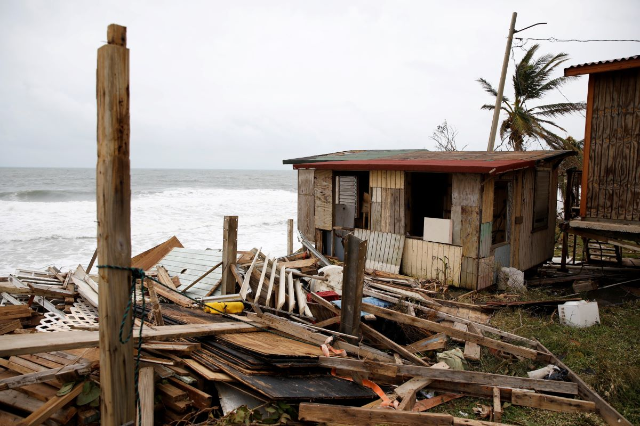 | Know better. Do better. |  | Climate. Change.News from the ground, in a warming world |
|
| | No data, no help?At COP28 in Dubai, countries put into action a pioneering new “loss and damage” fund to help poorer climate-vulnerable countries access the financial help they need to recover from worsening climate-fuelled disasters.
But deciding where the fund’s very limited cash should go will be a big challenge, especially with many nations struggling to accurately document the scale of their losses.
When powerful Hurricane Maria hit Puerto Rico in 2017, for instance, the official death toll for the U.S. island territory was set at 64 – but a range of subsequent studies and surveys suggest at least 1,139 people died.
 Damaged houses are seen after the area was hit by Hurricane Maria in Yabucoa, Puerto Rico September 22, 2017. REUTERS/Carlos Garcia Rawlins |
Now backers of the new U.N. fund are trying to establish much better national and international data reporting systems, to enable the
fund to more fairly assess and compare losses and distribute money where it is needed most, our correspondent Bhasker Tripathi found.
Good data – and the ability to gather it effectively at national level and compare it at international level - is “the bedrock for the effective operation of the loss and damage fund,” said Harjeet Singh, a member of a U.N. technical expert group on risk management under the U.N. loss and damage mechanism.  View of the landscape at Langtang, Nepal in this undated handout image. Tika Gurung/Handout via REUTERS |
Cleaner power, less
riskEven better than accessing the loss and damage fund, of course, is avoiding losses in the first place – and sometimes work to do that can have other climate benefits as well.
High in the Himalaya mountains of Nepal, climate change is causing mountain ice to melt faster, with the runoff surging into glacial lakes that threaten to burst and send catastrophic flooding towards villages downstream.
To reduce the threat, Nepal is looking for funding to install drains on some particularly risky glacial lakes, to try to lower their water level. But what if that meltwater runoff could be harnessed to create clean hydropower as well?
Langtang and Kyanjin, two tiny villages high in the Kyanjin Valley, have been doing that for a few years now, with the power created providing the community’s first electricity, and cutting the use of firewood for cooking – a triple climate win that combines reduced disaster risk, new clean energy and better nature protection, correspondent Mukesh Pokhrel found.
Scaling up such smart solutions won’t be easy, with funding limited and work in high-mountain environments challenging and often costly. But expanding such efforts could have far-reaching benefits – including stabilising Nepal’s hydropower-fuelled power grid, which currently has vast swings in production between monsoon and dry seasons.
“There are two benefits to us: first, the risk of outburst will be reduced, and second, we get energy at the same volume throughout the year,” glacial researcher Dhananjay Regmi told Context.  A girl using a fan waits among other people before the Taylor Swift concert, following the death of a fan due to the heat during the first day concert, in Rio de Janeiro, Brazil, November 18, 2023. REUTERS/Pilar Olivares |
Too hot to
party?As efforts to cut climate changing emissions continue to fall far short of what is needed, growing climate impacts won’t hit only the world’s remote poor.
Around the globe, worsening heatwaves and other extreme weather are beginning to seriously impact outdoor concerts, sports events and other mass gatherings, with a young fan dying of heat exhaustion at a November Taylor Swift concert in Rio de Janeiro, where temperatures inside the venue hit 59 degrees Celsius (138F).
A list put together by Milad Haghani, a public safety and disaster specialist at Australia’s University of New South Wales, found at least 29 concerts and music festivals affected by extreme weather in 2023, with two spectator deaths recorded.
“It was absolutely a bad year for the music industry,” he said – with more likely ahead.
Organisers are starting to think about the risks to their fans, from adding shade to changing performance start times or turning to meteorologists to monitor threat levels.
“We know that with the climate changes we are living through, these episodes will be more frequent. We also know that every sector must rethink its actions in light of this new reality,” Serafim Abreu, an entertainment executive with T4F, told our correspondent Diana Baptista.
See you next week!
Laurie |
|
|
|